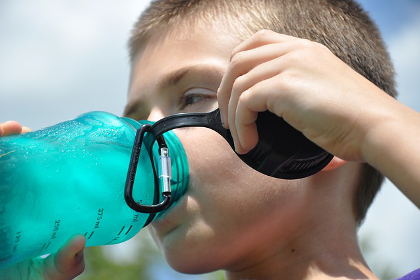
Regulating Endocrine-Disrupting Chemicals Could Improve the Health of the Next Generation
With more than 100,000 chemicals on the global market, it is a tremendous challenge to identify those that might cause harm to humans or wildlife. One class of chemicals, endocrine disruptors (chemicals that interfere with natural hormones), is receiving significant attention in the United States, European Union, and elsewhere.
Expert panels from the United Nations Environment Programme and World Health Organization, the Endocrine Society, the American College of Obstetricians and Gynecologists, and others have concluded that the evidence linking endocrine disrupting chemicals to human diseases is strong.
July 20, 2016 | Source: TruthOut | by Christina Rudén
With more than 100,000 chemicals on the global market, it is a tremendous challenge to identify those that might cause harm to humans or wildlife. One class of chemicals, endocrine disruptors (chemicals that interfere with natural hormones), is receiving significant attention in the United States, European Union, and elsewhere.
Expert panels from the United Nations Environment Programme and World Health Organization, the Endocrine Society, the American College of Obstetricians and Gynecologists, and others have concluded that the evidence linking endocrine disrupting chemicals to human diseases is strong.
How do we determine if a chemical is an endocrine disruptor? How do we separate the ‘bad actors’ from all of the other non-hazardous compounds?
Although this may seem like an easy task, in fact, it has proven to be quite difficult. In the US, for example, the Environmental Protection Agency has been working for 20 years to develop and implement the Endocrine Disruptor Screening Program (EDSP). Despite $100 million in funding, only 52 chemicals have been screened, and none have yet been declared to be an endocrine disruptor. This may seem like good news — no endocrine disruptors found! — but, according to scientific experts in the Endocrine Society, the world’s leading researchers on hormones, it is more likely an indication that the program’s methods are insufficient for this kind of evaluation.
Even worse is the pace of the EPA’s screening program. With more than 1,000 putative endocrine disruptors already identified by the US Food and Drug Administration and the non-profit group The Endocrine Disruption Exchange, at this rate it will take more than 300 years just to screen the compounds that have already raised some concern.
The situation isn’t much better in the EU. The European Commission has proposed new criteria to identify and classify endocrine disrupting chemicals.
Unfortunately, the proposal has a number of flaws that we and others have outlined in an open letter and other correspondence to the EU Directorate General for Health and Food Safety.
At this rate it will take more than 300 years just to screen the compounds that have already raised some concern.Two major concerns are: 1) The burden of proof for defining a compound as an endocrine disruptor is too high; compounds that are widely acknowledged to be endocrine disruptors like bisphenol A (BPA) would not be classified as such using the proposed EU approach. 2) The methods for identifying, evaluating, and integrating scientific evidence are biased and will further result in non-transparent (and likely inconclusive) assessments.
There is a lot at stake in determining which chemicals are endocrine disruptors. Children are particularly sensitive to exposures, and analyses examining just a few endocrine disruptors with strong links to a select number of human diseases estimate the annual health care costs associated with exposure to these compounds at more than €150 billion in the EU alone.
